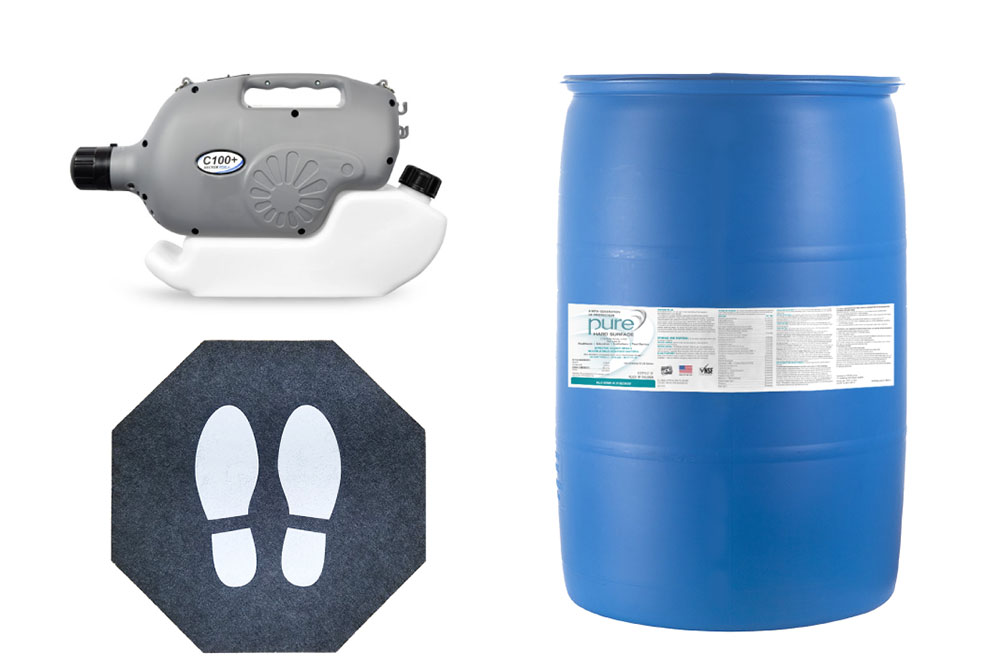The importance of PPE safety is paramount and includes the proper washing, handling and storage of uniforms.
Workplace safety is not a new issue, but the COVID-19 crisis has added an extra dimension to these old concerns. In addition to the standard workplace perils—corrosive liquids, trip hazards, and so on—we must now devise strategies for minimizing the risk of exposure to this potentially deadly virus.
It goes without saying that these strategies should include providing employees with the right kinds of uniforms and personal protective equipment (PPE).
However, the topic of uniform and PPE safety is not quite as simple as this. Yes, it is certainly important to give your employees high-quality uniforms and equipment—but you cannot stop there. You must implement policies that help employees get the most out of their apparel.
With that consideration in mind, here are some truths that business owners and managers should bear in mind.
When it comes to PPE—masks, gloves, and related gear—you cannot stop at the bare minimum. You must have more than what is strictly necessary to give every employee the equipment they need—for instance, if you have fifty employees, you really should have more than fifty pairs of reusable gloves. That is because PPE can become damaged or contaminated during the workday.
If employees cannot replace their PPE immediately, then they are forced to continue working with compromised apparel, which poses a safety risk. You can save yourself and your employees that trouble by having a surplus of PPE on hand for situations like these.
The same principle holds true for employee uniforms. Do not force your employees to go around all day with soiled or impaired clothing just because there are no spares on the premises. Keeping a supply of extra uniforms does not just help employees look sharp—it makes them safer as well.

The best practice is to ensure that employees are wearing clean uniforms and PPE at the beginning of each shift. Everything that is washable should be washed before the employee puts it on.
This means that the laundering of uniforms and reusable PPE should be a frequent, scheduled occurrence, not something that is done only when stains or dirt become visible. Microscopic contaminants can and do cause harm. This has become especially true in the age of COVID-19, a virus that can survive on fabric for several days, and even longer on plastic.
Due to the expense and bother of maintaining on-site washing facilities, many businesses require each employee to assume responsibility for cleaning their apparel.
The problem with this approach is that there is no way to be sure that employees are washing their uniforms properly (or at all, for that matter). And what are they to do when their uniform becomes damaged? Frayed or torn clothing create spaces where hazardous microorganisms can take residence.
These are all reasons why you should consider turning to a third-party laundry service to assume these tasks. Not only will your uniforms get washed thoroughly by trained professionals, but the apparel can also be gamma irradiated to ensure compliance for aseptic environments for cleanroom grade reusable garment services. If the uniform needs mending, a good laundry service can handle that too.
Cleaning your uniforms and washable PPE is one thing—keeping them clean is another. It is far too easy to re-contaminate clothing after it has been washed. There are several ways this can happen, such as:
Failing to clean storage units – If you hang up employee uniforms in a storage unit or rack of some kind, remember that these areas need to be kept clean and routinely disinfected. Metal hooks, for instance, can harbor pathogens.
Using dirty containers to transport apparel – Some businesses use plastic containers to transport unclean uniforms and PPE to the laundry facility—and then use the same container on the return trip. This means the “clean” apparel gets exposed to contaminants before it ever reaches the employees who will be wearing it. An even bigger mistake is to mix clean and dirty apparel together at the same time.
You need separate containers for clean and dirty clothing. If that is impractical, install replaceable liners in the container. It is also wise for persons handling these containers to wear gloves.
This is another task that a third-party cleanroom laundry service can help you with. After cleaning, your uniforms will be individually packaged in hermetically sealed bags to avoid re-contamination. They will also be assigned the appropriate employee barcode ID number so that each worker gets back the proper uniform.
Partnering with a laundry service is the best way to avoid the pitfalls associated with the use and reuse of employee uniforms and PPE.

About the Author
Jerry Martin is the Vice President of Sales & Marketing at Prudential Overall Supply, a leading provider of workplace uniforms and personal protective equipment (PPE) to a wide range of industries and organizations. Currently a board member for the American Reusable Textile Association (ARTA) where he works on projects to further the benefits of reusable textiles versus disposable alternatives. Martin also contributes to the Textile Rental Service Association (TRSA) where he is a former chairman of the association’s Marketing & PR committee and helped establish TRSA’s international standard for its Clean Green certification program.
This article is sponsored by Prudential Overall Supply.
Scott Ellyson, CEO of East West Manufacturing, brings decades of global manufacturing and supply chain leadership to the conversation. In this episode, he shares practical insights on scaling operations, navigating complexity, and building resilient manufacturing networks in an increasingly connected world.